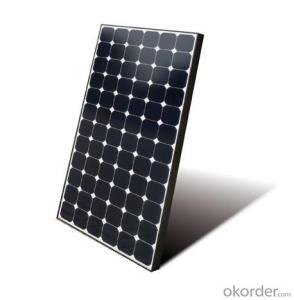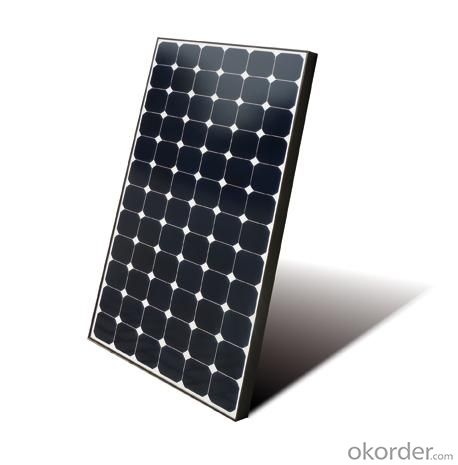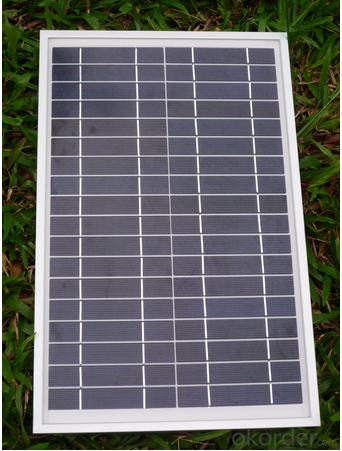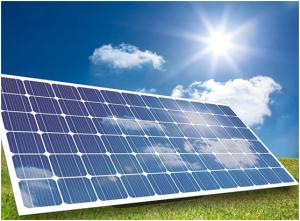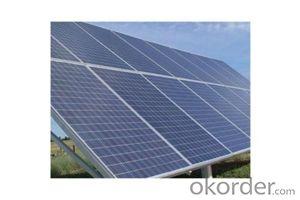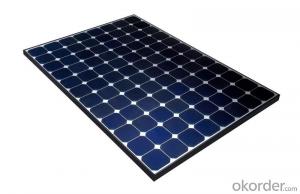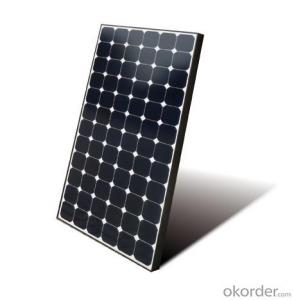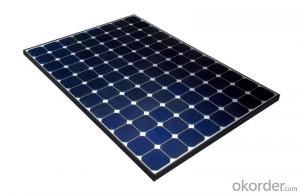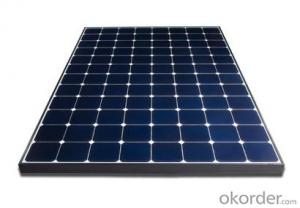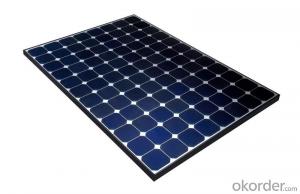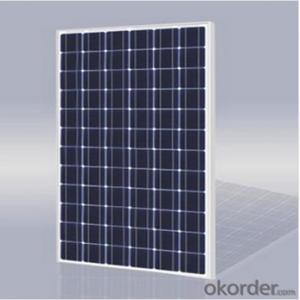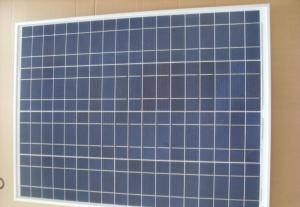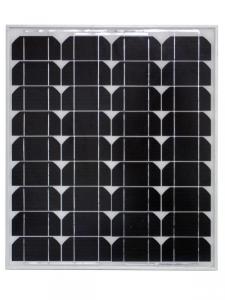Truck Solar Panels - CNBM Poly 190W Solar Panel with TUV UL CE Certificate for Residential
- Loading Port:
- Shanghai
- Payment Terms:
- TT OR LC
- Min Order Qty:
- 100 watt
- Supply Capability:
- 1000 watt/month
OKorder Service Pledge
OKorder Financial Service
You Might Also Like
Specification
CNBM Poly 190W Solar Panel with TUV UL CE Certificate For Residential
Introduction
Electrical connections are made in series to achieve a desired output voltage and/or in parallel to provide a desired current capability. The conducting wires that take the current off the modules may contain silver, copper or other non-magnetic conductive [transition metals]. The cells must be connected electrically to one another and to the rest of the system. Externally, popular terrestrial usage photovoltaic modules use MC3 (older) or MC4 connectors to facilitate easy weatherproof connections to the rest of the system.
Each module is rated by its DC output power under standard test conditions, and typically ranges from 100 to 365 watts. The efficiency of a module determines the area of a module given the same rated output – an 8% efficient 230 watt module will have twice the area of a 16% efficient 230 watt module. There are a few solar panels available that are exceeding 19% efficiency. A single solar module can produce only a limited amount of power; most installations contain multiple modules. A photovoltaic system typically includes a panel or an array of solar modules, a solar inverter, and sometimes a battery and/or solar tracker and interconnection wiring.
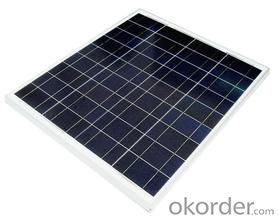
Suggested application
Home lighting business lighting,
Garden lighting, pavement lighting
Farmer household lighting
Decorative water pump
Traffic signal lighting
Industry area
Business area
Solar Power Plant
Product feature
Modules are made of Monocrystalline or Polycrystalline Silicon cell.
Materials and color of the solar panel frame: Clear anodized aluminum alloy type 6063T5 Universal frame; Silver-white color;
The output connection gathers the coupling: Selects conforms to the IEC-612615; 2005, class II, IEC61730 international standard; Airtight waterproofing binding clamp;
Module seal structure: The surface is thick, the high diaphanous rate armored glass with solar cell board special-purpose 3.2mm becomes after the high temperature lamination craft. The back selects has waterproof and anti- aged performance fine TPT materials. The entire block battery board has, the waterproofing, the anti- aging airtight and so on the fine performance;
Power tolerance: +/-3%
Packaging
International standard cartons (according to the requirements of customers)
- Q: I know that there is a life expectancy for solar panels, and I suppose, the technology involved. Any information?
- Great okorder
- Q: Can solar panels be installed on flat surfaces?
- Yes, solar panels can be installed on flat surfaces. However, for optimal performance, it is recommended to tilt the panels at an angle that allows them to capture maximum sunlight.
- Q: Can solar panels be installed on historic homes or buildings?
- Yes, solar panels can be installed on historic homes or buildings. However, the installation process may require careful planning and consideration to ensure that the panels do not compromise the historical integrity of the structure. Some guidelines and regulations may need to be followed, such as placing the panels on less visible areas or using panels that blend well with the building's design.
- Q: Can solar panels be used for powering outdoor lighting?
- Yes, solar panels can be used for powering outdoor lighting. Solar panels capture sunlight and convert it into electricity, which can then be stored in batteries. This stored energy can be used to power outdoor lighting fixtures, making them independent of the grid and environmentally friendly.
- Q: In some countries where electric generation is low, they are not available easily.
- Believe it or not, solar panels are so expensive in this country because of government subsides. Without market competition, companies have no obligation to compete with each other on price. If our government would stop paying people to buy solar panels and giving solar panel companies tax breaks, companies would be forced to lower their price and raise their quality in order to get you to buy their product. This would be true of oil/gas, corn, soy beans and a number of other companies and products as well.
- Q: Can solar panels work in the shade?
- The okorder / All solar panels sold by Energy Matters have bypass diodes, which send output from the remaining cells around that dead cell. However, you have lost the output of that cell, so the total panel voltage will drop by about 0.48 volts per cell. Most panels are in the 6 to 8 volt range, and most batteries need at least 3.5 volts to charge completely. So, if 2 or more cells are shaded, the output voltage of the panel may drop too low to charge the battery.
- Q: I am writing some mock legislation for a school club and I need to know some of the environmental effects of solar panels. Also, where can I find specific studies(like from colleges and/or universities) proving these benefits as well as benefits and reasons of going green.
- The social earnings is that with photograph voltaic panels they help decrease pollution that fouls the air that the ordinary public breath and it will supply up/decrease killing human beings for the supplies used now (oil gasoline) and likewise social is they gained't could dig in those risky mines for coal, which would be a social earnings. Economically it is going to pay off in the money sooner or later once you pay-off for installation them. Environmentally they help with removing pollution from the different supplies (coal, oil gasoline) additionally nuclear potential is barely stable for potential, yet commit it to memory remains turns right into a waste which will exchange right into a pollutant.
- Q: How can I calculate the amount of watts needed for a solar panel to power a water and air pump in gal/hr and a 600 watt LED light?
- Mimi: Solar Power is not really that economical, and has many other disadvantages as well. You did not specify much info in your question as to the size of the water or air pump. So let's make some assumptions to get you some numbers. ) Let's say the water and air pump are about HorsePower (HP). The HP pump , considering efficiency losses, will draw around ,000 Watts , or kW. 2) The 600 Watt LED Light is quite high --- they are usually much smaller lights 40 Watts or less. BTW --- these LED lights are very expensive light as well. Just so you are aware. Between the pump(s) ( maybe 000 to 400 Watts) and the 600 Watt light ----- and without knowing the specifics --- you are probably looking at around 2,000 Watts or 2 kW. A 2 kW Solar PV unit will run around $20,000. The PV unit will only run at full capacity during daylight hours. They usually average about 5 hours per day. So you will only be able to run your pump and LED Lights during the middle of the day --- maybe 0:00 AM to 5:00 PM. If you want to run the pump and lights after sundown, you will need battery back-up. The electric storage batteries will likely run about an extra $5,000. They will last about 5 years. If you decide this doesn't work out well --- you can stay with the local utility --- at $0.0 per kWh. It will cost you about $0.0 per hour to run the pump --- maybe 30 to 50 cents per day. It would cost you about 6 cents per hour to run your light. Maybe 30 or 40 cents per day. You could essentially run your pumps and light several hours each day --- all for about $ per day, or $365 per year. This sounds like a less costly alternative.
- Q: I have seen quite a few different websites that talk about building your own solar panels for around $200. I wanted to know if anyone has had any experience with this before I decide to try it myself. It would be very helpful to know what I can expect from such an inexpensive setup; what kind of electronics or appliances would I be able to power. Realistically what can I expect from a $200 setup, and what would I need to power say a whole bedroom (clock, regular sized TV, PC, ext.).
- Yes you can build a solar panel with that kind of money but i don't think you can do much with it. is more like a hobby or an experiment. If you want to see a custom made low cost solar panel check my blog.
- Q: i've heard environmentalists like ed begley jr use the phrase quot;peak shaving hourswhen talking about solar energy.what does that phrase mean, please?thank you to all who respond.
- From a power company's perspective, it costs more to supply electricity during hours when electricity use is high. The times of day when power use is the highest are called peak hours. Historically power companies would sometimes charge large power users a higher rate during peak hours to encourage them to shift their electricity use to other times of the days. With the development of smart power meters and smart grid technology, it's now possible to offer the same incentive to individual home owners. so i'm wanting to eventually get solar panels.? If you live in an area where the electric rate varies depending on the time of day, then peak shaving improves your payback/return of investment on grid tied solar panels. Particularly in areas with high air conditioner usage, the peak hours generally correspond to the times when solar panels generate the maximum power. Look at it like this: Suppose your power company charges you $0.5/kWH during off peak hours and $0.30/kWH during peak hours. Because the solar panels generate the most power when the cost of electricity is the highest, it is easier to justify the cost of installing the panels because you are avoiding buying electricity at the highest rate. If your power company just bills you at a flat rate at all times, then it becomes more difficult to justify the cost of installing the panels and associated equipment..
Send your message to us
Truck Solar Panels - CNBM Poly 190W Solar Panel with TUV UL CE Certificate for Residential
- Loading Port:
- Shanghai
- Payment Terms:
- TT OR LC
- Min Order Qty:
- 100 watt
- Supply Capability:
- 1000 watt/month
OKorder Service Pledge
OKorder Financial Service
Similar products
Hot products
Hot Searches
Related keywords
